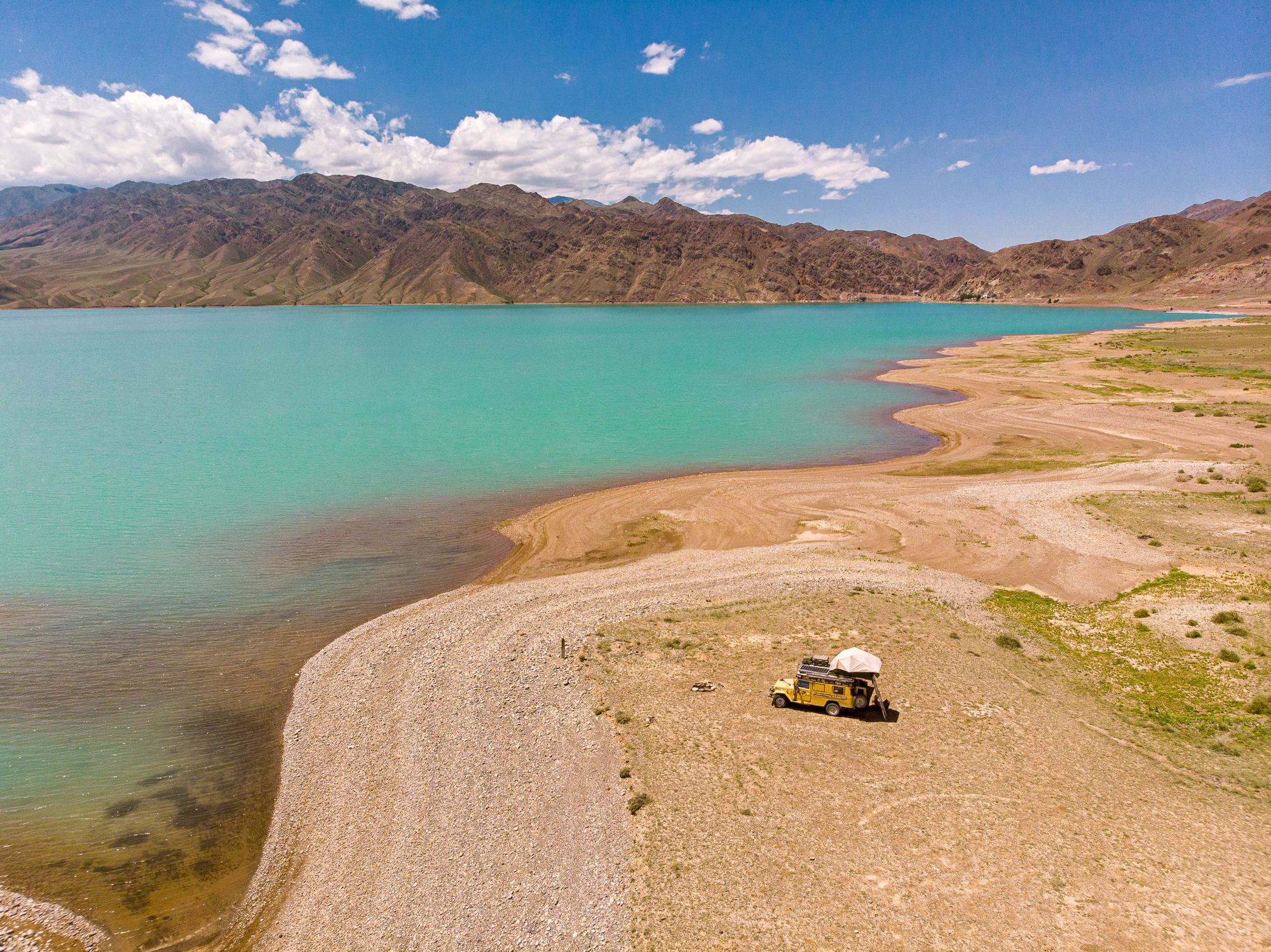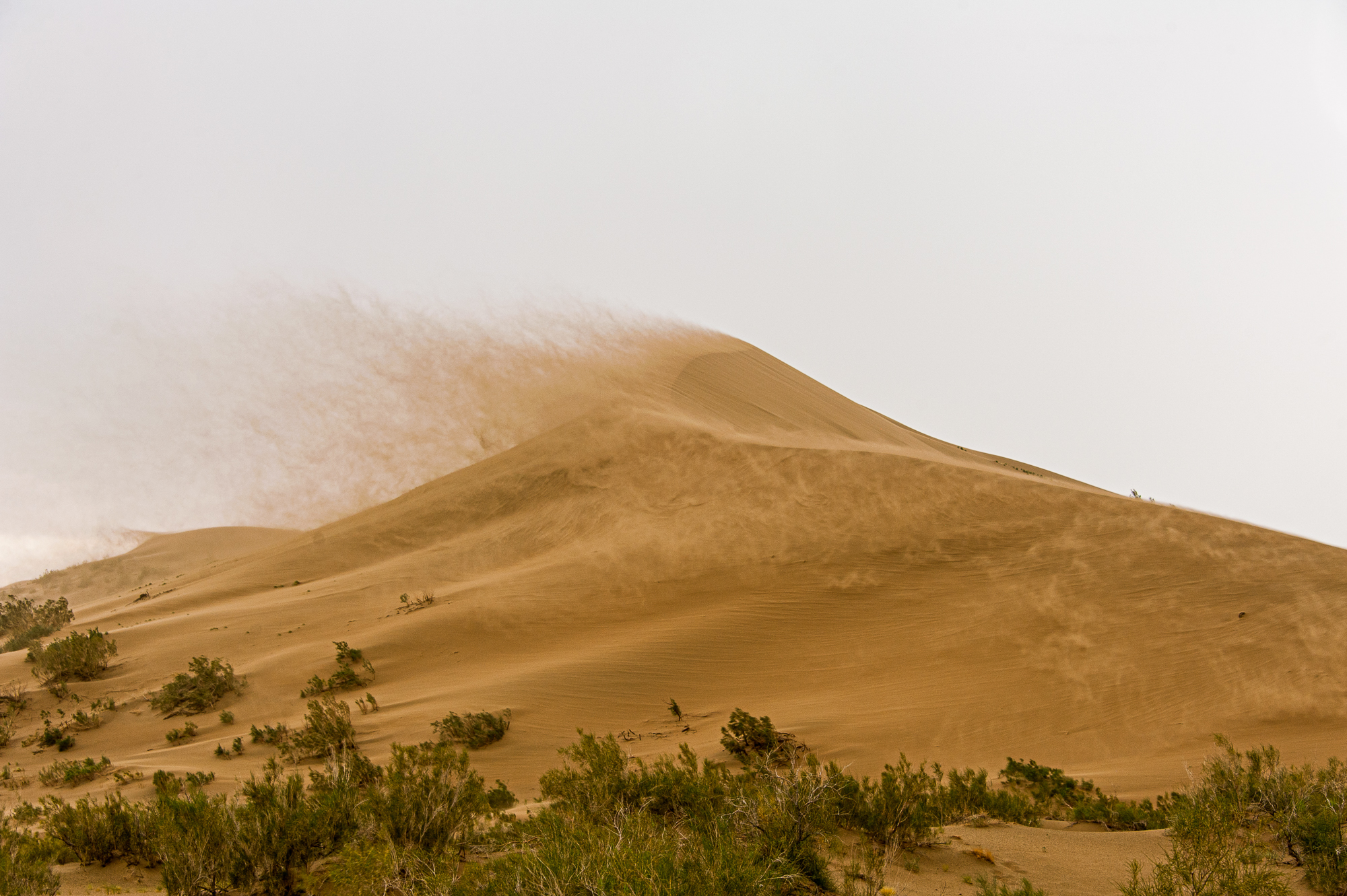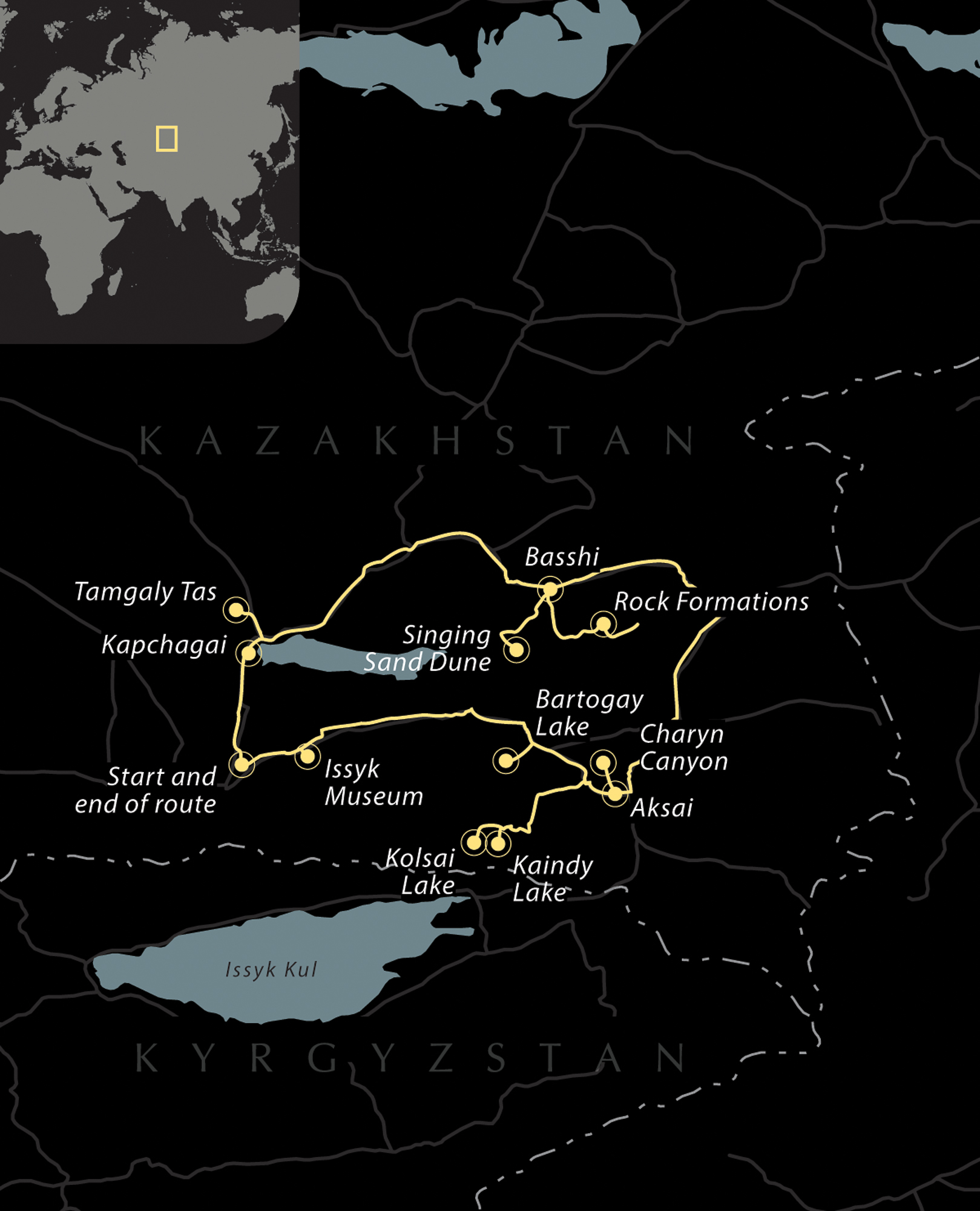Photography by Coen Wubbels
Kazakhstan is the ninth largest country in the world as well as the largest Stan country of Central Asia, sharing borders with Russia, China, Kyrgyzstan, Turkmenistan, and Uzbekistan. Vast and empty, it’s possible to traverse more than 1,200 miles of continuous steppes, home to the traditional nomads who, until the Soviet era, roamed the plains with their herds and lived in yurts. While urban life has become the standard, you may still come across the occasional yurt, and free-range cattle is the norm.
The country’s most enticing scenery and canyons lie near or inside the border regions. The southeast, in particular, draws visitors with its kaleidoscope of landscapes and cultural sites. This five-day, 790-mile journey will take you to rock carvings, burial sites, and the ancient home of the Golden Man while driving across steppes, skirting shimmering blue lakes and mountain ranges, and wild camping in spectacular settings, among which in what’s dubbed the Grand Canyon of Kazakhstan.
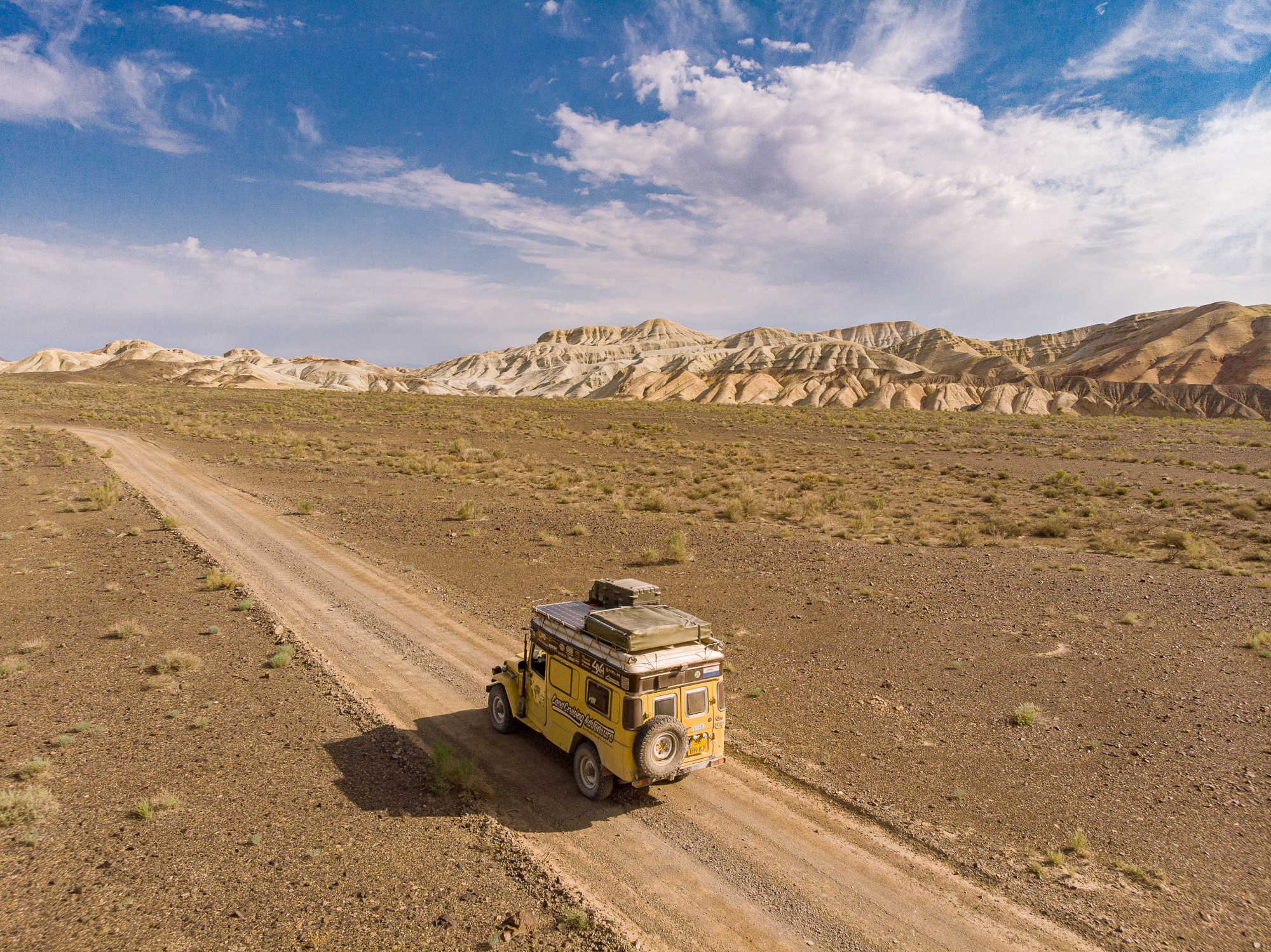
General Information: Southern Kazakhstan
Wilderness aside, this is also a journey through history, from the region’s earliest settlements to modern-day Almaty. Apart from many cemeteries, large burial mounds dot the countryside, tangible reminders of the earliest known tribes of the Scythian or Saka era who roamed these lands in the 9th-7th centuries BCE. It was a big day in 1969 when archaeologists discovered a burial mound east of Almaty with a tomb that had not been robbed, which contained a Saka prince. He was dressed in a red-colored jacket covered with triangular pieces of gold, and a total of 4,000 more pieces made up his dress and accessories. The Golden Man has become a symbol of Kazakhstan, and you’ll find replicas in many museums, including in the museum of Issyk (Esik), where the tomb was discovered, which lies on this route.
Rock carvings can be found throughout Kazakhstan, and most are attributed to prehistoric nomadic groups. However, Tamgaly Tas shows carvings of Tibetan script in addition to Burkhanov (bodhisattvas) or Buddha figures sitting on lotus flowers. The unique and intricate images are magnificent. Their origins remain somewhat of a mystery, but it is speculated that they date from the 18th century and were made by Dzhungars, who had converted to Lamaist Buddhism.
To soak up a fair share of 20th-century, Soviet-era architecture, stroll the streets of Almaty. As in the countryside, you can eat traditional plov (pilaf) or lagman (noodles with vegetables and beef), but if you want to blend in with the modern Kazakhs, visit one of the many fast-food joints for a meal of sushi combined with a burger or pizza.
The Drive
It’s an easy start with a 70-mile drive from the capital of Almaty past Lake Kapchagai, attracting sunbathers and jet ski enthusiasts alike. Considered the country’s Las Vegas, the adjacent town of Kapchagai is the place for gambling. Follow the shore and turn north onto a road cutting through agricultural land. After nine miles, turn west onto the meandering trail that takes you through undulating terrain to the Îli River. Admire the Tamgaly Tas Buddhist carvings on the rocky outcrop (popular with rock climbers farther down the trail), pitch camp along the river, and enjoy a refreshing swim.
After the shortest drive on Day 1, the longest drive is on Day 2, 225 miles. Return to Route A3 and turn east for a 110-mile drive across agricultural land and fields dotted with flowers. Depending on the season, you might see beehives and possibly vendors selling honey. At the park office in Basshi, buy an entrance ticket to Altyn Emel National Park, which includes access to the museum on site. Altyn Emel means Golden Saddle, and legend attributes the name as being coined by Genghis Khan when he passed through in 1219, as the land consisted of sun-yellowed grass. If you’re lucky, you may spot goitered gazelles, wild asses, or arkhar-merino sheep.
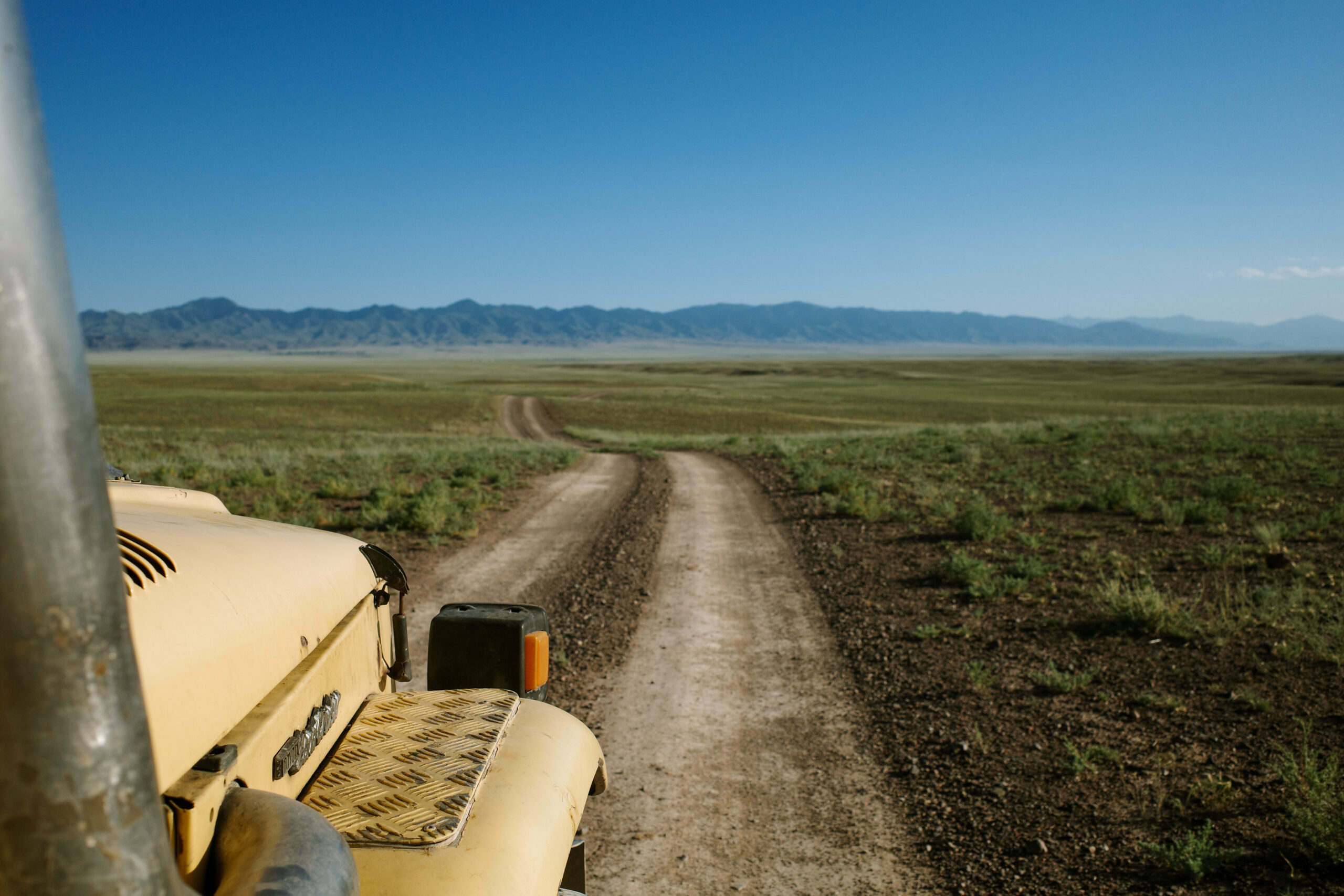
The roads are unpaved, so consider airing down the tires. Turn southwest at the fork to head for the Singing Sand Dune, two barchan dunes 390 feet high. If the weather conditions are perfect (depending on the humidity of the sand), you may hear “singing,” a sound emanating from the depth of the dune while climbing or descending it. Return the way you came and turn south at the fork. At a T-junction, continue straight past a hamlet to arrive at a 700-year-old willow tree. It’s a pleasant, shady place to stretch your legs for a short walk around the lake. There are picnic tables and an outhouse toilet.
Turn around and follow the sign pointing east to the Aktau Mountains. About halfway there, a short trail north takes you to the Katutau Mountains, where natural pieces of art formed from volcanic rock full of pitted outcrops draw the eye. Return south, take the easternmost track at the fork, and turn east onto the main track until the road ends in an open area with shaded picnic tables. You can hike a few kilometers into the eroded mountains, where an incredible color spectrum awaits. It’s a particularly mesmerizing landscape at sunset, and we loved wild camping here.
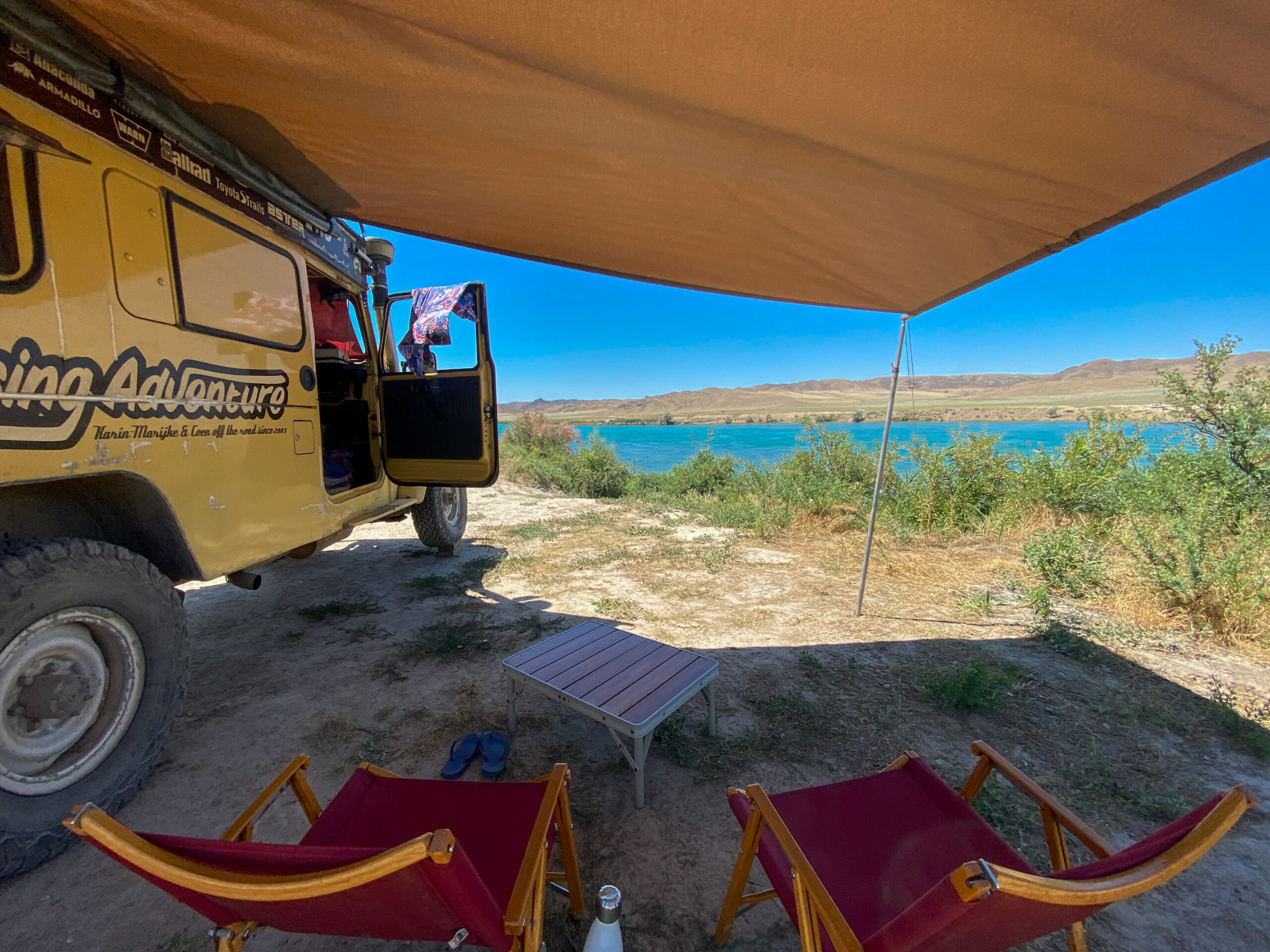
You’ll need to return to Basshi to exit the park. From here, asphalt takes you to the Charyn Canyon, also called Kazakhstan’s Grand Canyon. You can drive to the official entrance and hike down the canyon (as you can no longer drive into the canyon). We preferred camping in the surrounding canyons, which are void of tourists and just as gorgeous. Follow the trail north from Aksai across grasslands to Yellow Canyon. At the fork, keep the high track and camp on the edge to take in the sunset, or drive into the canyon to get a feel of its grandness.
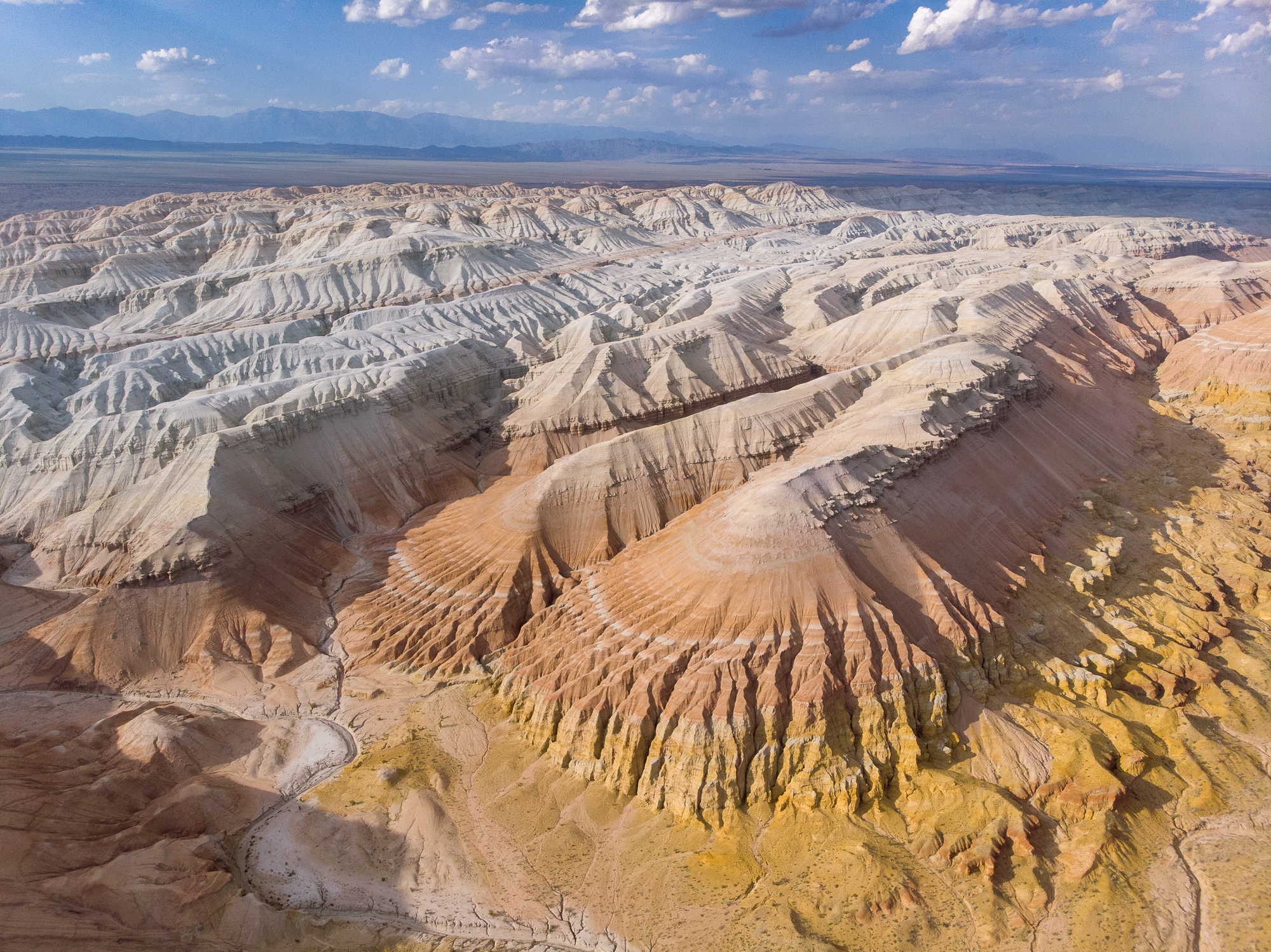
Next is Kazakhstan’s Switzerland. From Aksai, follow P-16 until you see a sign to Kaindy Lake. The trail to the submerged spruce forest is unpaved and unmaintained, so expect to drive at a snail’s pace to the parking lot. It’s a few minutes more to hike to viewpoints of the stunning 400-meter-long lake comprised of translucent water and dead tree trunks formed after an earthquake caused a landslide. Return to the P-16, which remains entirely asphalted to the huge parking lot of the scenic Kolsai Lake. In summer and on weekends, the place is packed. Enjoy the views, rent a boat, or hike five miles in the forest to the second lake. You can wild camp along the river just below the parking lot or continue to Bartogai Lake (86 miles, of which 10 are unpaved). You won’t find this off-the-beaten-track lake in tourist brochures; enjoy its bare surroundings to yourself.
If you camp at Kolsai Lake, it’s 180 miles back to the Almaty airport. From Bartogai Lake, it’s 114 miles. Stop at the Issyk Museum to admire the Golden Man and learn about the Scythians. You can also visit the burial mounds on the property. If you have time in Almaty, check out the Green Market or stroll through Panfilov Park with its striking Russian Orthodox Zenkov Cathedral and massive war memorial.
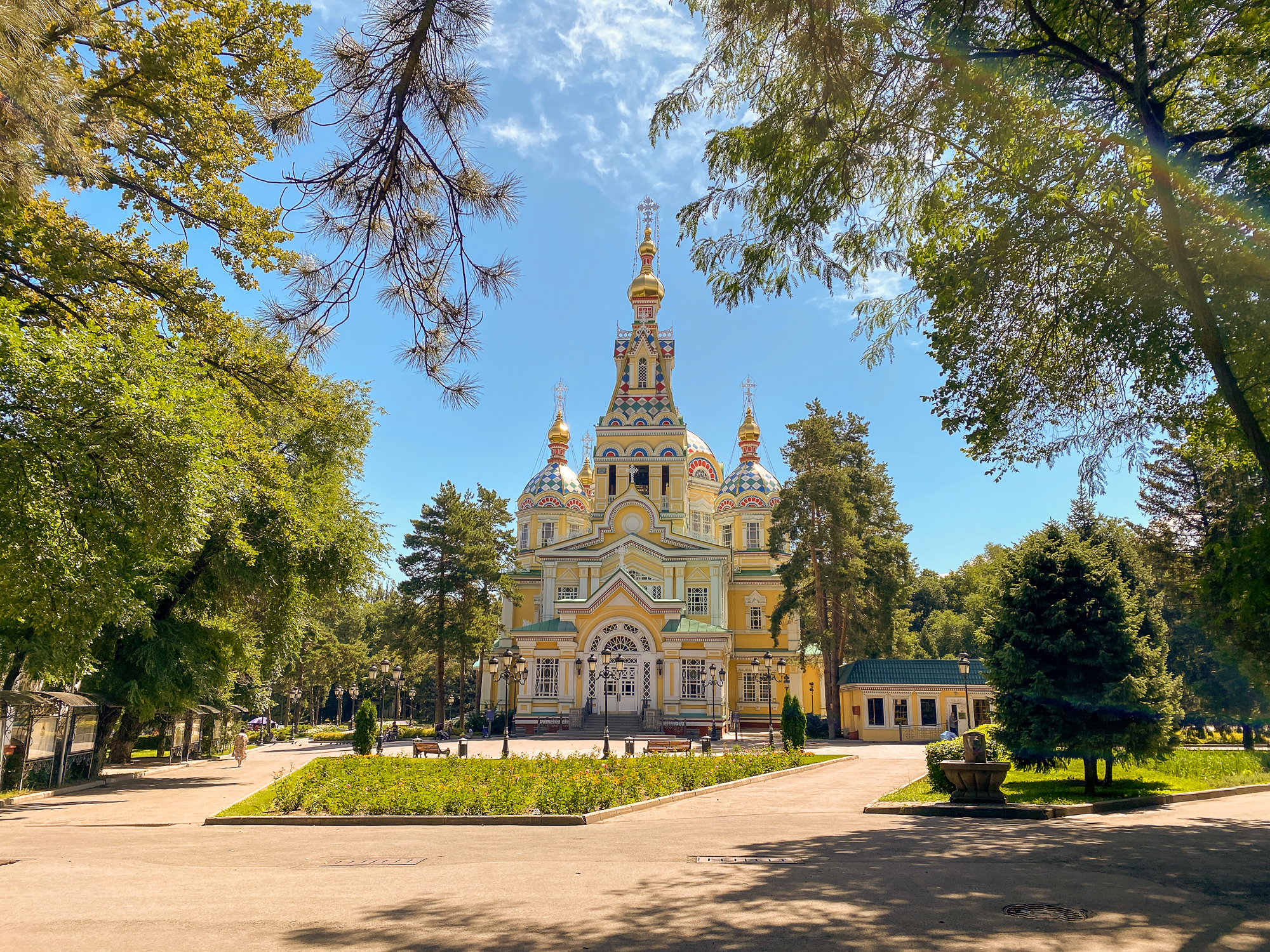
Access
Flying In Book a flight to Almaty International Airport, nine miles northeast of the capital, and rent a vehicle on-site.
Overlanding Almaty lies on the overlanding routes from Kyrgyzstan/Uzbekistan to or from Russia/Mongolia.
Logistics
Total miles: 790
Suggested time: 5 days
Longest distance without fuel: 200 miles
Fuel Sources
Basshi 44° 10′ 53.1″ N, 78° 43′ 34.7″ E
Shonzhy (east of Charyn Canyon) 43° 32′ 01.9″ N, 79° 24′ 54.0″ E
Jalañaş 43° 02′ 39.3″ N, 78° 38′ 13.6″ E
Difficulty (2.0 out of 5.0)
The trip is largely on asphalt and partly on gravel and is all doable in 2WD, including Altyn Emel National Park. To drive to the edge of the Yellow Canyon, 2WD will suffice, but continuing into the canyon requires a high-clearance 4×4.
When to Go: Southeastern Kazakhstan
April/May and September have the most pleasant temperatures (around 68°F), while summers are doable but hot (95°F to 104°F).
Permits and Fees
No permits are required.
Altyn Emyl National Park’s entrance fee is 1,106 tenges per person and 200 tenges per vehicle per day.
Charyn Canyon’s entrance fee is 806 tenges per person and 350 tenges per tent per day.
Kaindy Lake’s entrance fee is 600 tenges per person and 612 tenges per vehicle per day.
The Golden Man museum’s entrance fee in Esik is 100 tenges per person.
Suggested Campsites
Wild Camp, Île River (1,420 feet) 44° 03′ 55.5″ N, 76° 59′ 42.8″ E
Wild Camp, Altyn Emel National Park (1,870 feet) 43° 59′ 26.4″ N, 79° 14′ 26.9″ E
Wild Camp, Yellow Canyon’s Edge (3,445 feet) 43° 21′ 16.2″ N, 79° 07′ 19.9″ E
River Camp, Yellow Canyon (3,050 feet) 43° 21′ 49.3″ N, 79° 06′ 28.4″ E
River Camp, Kolsai Lake (5,475 feet) 43° 00′ 54.3″ N, 78° 20′ 31.9″ E
Wild Camp, Bartogai Lake (3,510 feet) 43° 21′ 49.5″ N, 78° 31′ 10.2″ E
Resources: Southeastern Kazakhstan
It is recommended that the traveler utilize redundant GPS devices (like a phone and a dedicated GPS), along with paper maps and a compass. This track, along with all other Overland Routes, can be downloaded on our website at overlandjournal.com/overland-routes/.
25 Overland Route descriptions are intended to be an overview of the trail rather than turn-by-turn instructions. We suggest you download an offline navigation app and our GPSX track, as well as source detailed paper maps as an analog backup. As with any remote travel, circumstances can change dramatically. Drivers should check road conditions with local authorities before attempting the route and be ready to turn back should extreme conditions occur.
Editor’s Note: This article was originally published in Overland Journal’s Winter 2024 Issue.
Our No Compromise Clause: We do not accept advertorial content or allow advertising to influence our coverage, and our contributors are guaranteed editorial independence. Overland International may earn a small commission from affiliate links included in this article. We appreciate your support.


